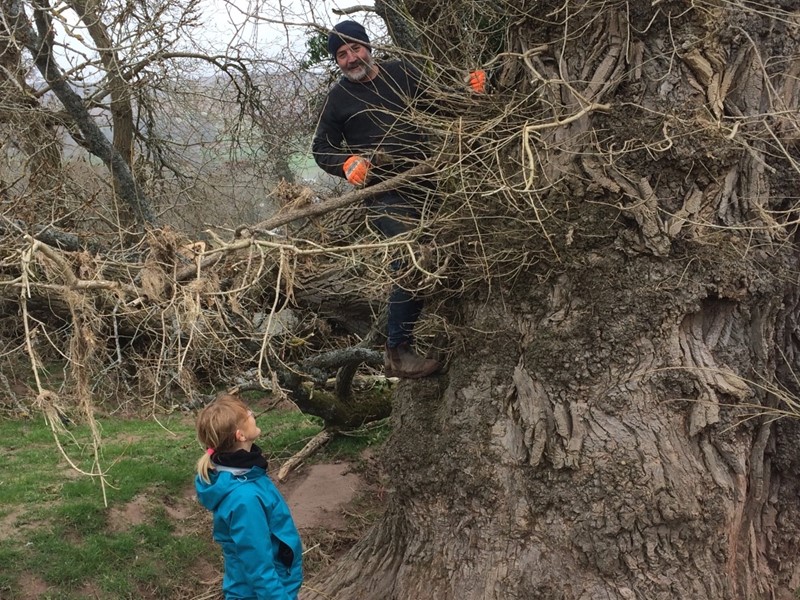Black Poplar

European black poplar is the most endangered native timber tree species in Britain, and a noble tree by any measure. It is a riverside tree in England and Wales and, in the second half of the 20th century, when we tidied up our river banks nationally, we removed a large proportion of the tree’s habitat. By the mid-1970s, the number of standard trees in the British countryside was down to around 1,000. Older black poplar trees provide a rare and rich wildlife habitat, especially for epiphytic plants, insects and invertebrates.
Black poplar has been a prominent landscape feature in the field beside the river Usk, just upstream from Crickhowell bridge on the Llangattock side, for a long, long time. Sadly the last full-sized tree near Crickhowell fell during the floods in early March (remember them?), and was lain out, stretched out across the field.
John Gibbs, a member of our Advisory Panel and formerly senior tree pathologist at the Forestry Commission, emailed Keith and Rob with an idea: ‘It occurs to me that it would be a really good idea for the project, for us to collect a large number of shoots from the fallen tree and see if we (and lots of other local enthusiasts) can get them to root (you just stick vigorous current shoots in the ground at this time of year)… if we could ensure that a good number of the Crickhowell clone is perpetuated locally in the river valley, it would be well-worth doing.’
Attached, a photo of Keith up a black poplar, collecting a large number of shoots. We now have several hundreds cuttings in the ground, leafing and establishing roots. The clone will be perpetuated locally. So important. Thanks to everyone who collected and planted cuttings. Recent feedback suggests cuttings are doing well in many different locations.
The initiative attracted media attention and ended up as an item on BBC Radio Wales Country Focus.
Long live the European black poplar.